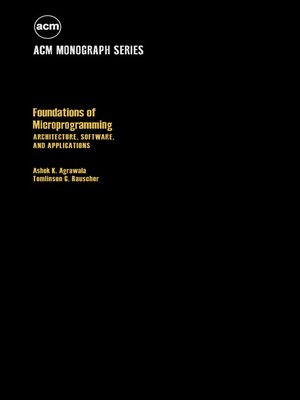Foundations of Microprogramming
ebook ∣ Architecture, Software, and Applications
By Ashok K. Agrawala

Sign up to save your library
With an OverDrive account, you can save your favorite libraries for at-a-glance information about availability. Find out more about OverDrive accounts.
Find this title in Libby, the library reading app by OverDrive.



Search for a digital library with this title
Title found at these libraries:
| Library Name | Distance |
|---|---|
| Loading... |
Foundations of Microprogramming: Architecture, Software, and Applications discusses the foundations and trends in microprogramming, focusing on the architectural, software, and application aspects of microprogramming. The book reviews microprocessors, microprogramming concepts, and characteristics, as well as the architectural features in microprogrammed computers. The text explains support software and the different hierarchies or levels of languages. These include assembler languages which are mnemonic or symbolic representation of machine commands; the procedure oriented machine-dependent; and the procedure oriented machine independent. A simulator is used to interpret programs written in machine or micro-language before the instructions in the program can be run. A simulator and translator (which change some steps from one program written in another language to another program) should interface with the design language of the computer for these components to operate even when a new machine is developed. The book cites four existing computers which have "simple" diagonal microinstructions such as the Hewlett-Packard HP21MX and the Microdata 3200. Horizontal types of microinstructions allow parallel execution of many micro-operations, such as the Cal Data family of computers, the Varian 73, and the NANODATA QM-1. Microprogramming is applied in emulation, program enhancement, operating systems, signal processing, and graphics. The text can benefit programmers, computer engineers, computer technicians, and computer instructors dealing with many aspects of computers such as programming, hardware interface, networking, engineering or design.







